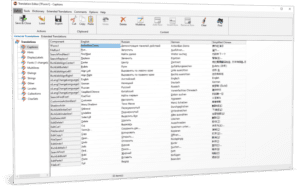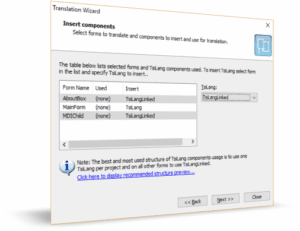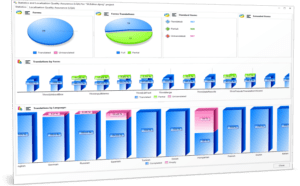Introduction
In today’s globalized market, the ability to successfully localize software applications across various platforms—such as Windows, Android, and macOS—has become a necessity for developers. Multi-platform localization not only enhances user experience but also opens doors to international markets, driving sales and brand recognition. However, navigating the complexities of localization can be daunting. This article will explore effective strategies for achieving successful multi-platform localization, emphasizing the advantages of a unified codebase and the tools available, particularly the TsiLang Components Suite.
Understanding Multi-Platform Localization
Multi-platform localization involves adapting software to meet the linguistic and cultural needs of users across different platforms. This process includes translating text, adjusting layouts, and ensuring that the application functions seamlessly in various environments. Utilizing a unified codebase can significantly streamline this process, as it allows developers to maintain a single version of the application while accommodating multiple languages and regional settings.
Advantages of a Unified Codebase
-
Consistency:
A unified codebase ensures that updates and changes are implemented uniformly across all platforms. This reduces the risk of inconsistencies and simplifies maintenance.
-
Efficiency:
By managing localization in one codebase, developers save time and reduce the overhead associated with managing multiple versions of the same application.
-
Reduced Costs:
Localization efforts can be costly, especially when managing different codebases. A unified approach minimizes these costs, making it more feasible to reach global markets.
Strategies for Successful Multi-Platform Localization
1. Choose the Right Tools
The choice of localization tools is critical to the success of your multi-platform localization strategy. The TsiLang Components Suite stands out as a powerful solution for developers working with RAD Studio, Delphi, and C++Builder. It simplifies the localization process by offering automation, real-time language switching, and comprehensive support for all versions of FireMonkey and FireUI.
Features of TsiLang Components Suite
Effortless Localization
TsiLang automatically handles all string-type properties and system locales, ensuring that every element of your application is localized effectively.
Language Management
Utilize the TsiLangDispatcher to synchronize language changes across various forms, providing a seamless user experience.
2. Leverage Real-Time Language Switching
Incorporate real-time language switching capabilities within your application. TsiLang Components Suite allows users to switch languages at both design-time and run-time. This feature not only enhances user experience but also provides immediate feedback on UI layout adjustments, preventing issues like text overflow or misalignment.
3. Ensure Quality Assurance in Localization
Localization Quality Assurance (LQA) is critical to maintaining high translation quality. The LQA analytics tool within TsiLang Components Suite provides detailed statistics, detects common localization issues, and ensures that translations are consistent and accurate. By identifying potential problems early, you can enhance the overall quality and visual consistency of your localized content.
4. Manage Translation Data Effectively
With TsiLang, you can choose to store translations internally for compact applications or externally for easy updates. This flexibility allows your application to remain lightweight and provides end-users with the ability to manage translations without the need for recompiling the software.
5. Automate Testing with Pseudo-Localization
Automated pseudo-localization is an effective way to identify localization-related issues during the development stage. TsiLang components can generate mock translations, allowing developers to simulate how the application will appear in various languages. This proactive approach helps pinpoint layout problems and missing translations before the final release.
Conclusion
Multi-platform localization is an essential strategy for software developers aiming to reach a global audience. By leveraging a unified codebase and utilizing powerful tools like the TsiLang Components Suite, developers can streamline the localization process, ensuring a consistent and high-quality user experience across Windows, Android, and macOS platforms. Embracing these strategies will not only enhance your application’s appeal but also position your business for international growth and success.




